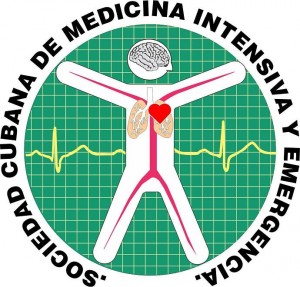Tomographic findings in cranioencephalic emergencies of cancer patients
Keywords:
findings, cancer, emergencies, neuro-oncology.Abstract
Introduction: Intracranial metastasis is the most common neurological complication in cancer patients. Its incidence is rising now days due to the improvements in diagnosis capacity by using neuroimagin technics, therefore its treatment has improved life expectancy
Objective: To describe the tomographic findings in patients with neuro-oncological emergencies.
Methods: A descriptive observational study was carried out.
Results: A total of 47 patients were studied. Lung cancer (71.4%) was the most common location of the primary tumor in males and breast cancer (36.4%) in females. The predominant clinical manifestations were hemiparesis/hemiplegia (34%) and headache (23.4%). The most frequent tomographic lesions were hyperdense (38.3%) and hypodense (31.9%). Among the hyperdense, intra-axial (42.9%) and supratentorial (35.1%) predominated. Among the hypodense, the most common were infratentorial (46.7%) and intra-axial (35.7%). The predominant definitive diagnosis was brain metastasis (66%), intracranial hypertension (42.6%) and cerebral edema (40.4%).
Conclusions: Tomographic images allow timely diagnostic guidance and constitute a valuable tool for adequate treatment.
Downloads
References
1. Martos-Benítez FD, Soler-Morejón CD, Lara-Ponce KX, Orama-Requejo V, Burgos-Aragüez D, Larrondo-Muguercia H, Lespoir RW. Critically ill patients with cancer: A clinical perspective. World J ClinOncol 2020;11(10):809-835. doi: 10.5306/wjco.v11.i10.809.
2. Espada Zurera M, Martínez Villena B, Carrero Fernández AM. Manejo de las urgencias y emergencias neurooncológicas.Medicina de urgencias 2019;12(90):5293-5302.doi:10.1016/j.med.2019.11.013.
3. Wang Y, Zou S, Zhao Z, Liu P, Ke C, Xu S. New insights into small-cell lung cancer development and therapy. CellBiolInt[Internet]. 2020 [citado 10 jul 2022]; 44(8): [aprox. 8 p.]. Disponible en: https://www.ncbi.nlm.nih.gov/pmc/articles/PMC7496722/
4. Ministerio de Salud Pública. Anuario Estadístico de Salud 2020. [Internet] 2021[citado 20 marzo 22] [aprox. 192 p.]:66 Disponible en:https://siteal.iiep.unesco.org/sites/default/files/sit_accion_files/cuba_anuario_estadistico_de_salud_2020.pdfHYPERLINK "http://bvscuba.sld.cu/anuario-estadisticode-cuba/"/
5. Ministerio de Salud Pública. Anuario Estadístico de Salud 2018. [Internet] 2019[citado 20 marzo 22] [aprox. 195 p.]: Disponible en: http://bvscuba.sld.cu/anuario-estadisticode-cuba/
6. Ministerio de Salud Pública. Anuario Estadístico de Salud 2019. [Internet] 2020[citado 20 marzo 22] [aprox. 195 p.]: Disponible en: http://bvscuba.sld.cu/anuario-estadisticode-cuba/
7. Roa Martínez. TC craneal urgente en nuestro entorno revisión de las indicaciones y hallazgos radiológicos. Seram[Internet]. 2015 [citado 10 ene 2021]. Disponible en: file:///C:/Users/pmtut/Downloads/1616-Presentaci%C3%B3n%20Electr%C3%B3nica%20Educativa-1632-1-10-20190313-1.pdf
8. A, Alvarado-Miranda A, Torres-Dominguez J, Lara-Medina PC, Villareal-Gomez YS, Reynoso-Noverón N. Factores pronósticos en pacientes con cáncer de mama y metástasis cerebral como primer sitio de recurrencia. Salud pública Méx[internet].2018 [citado 10 ene. 2019]; 60(2):[aprox. 5 p.]. Disponible en: https://scielosp.org/article/spm/2018.v60n2/141-150/
9. Gómez Ibáñez A., Irimia P., Martínez-Vila E..Urgencias neurológicas y guardias de Neurología. Anales Sis San Navarra. 2008 [citado el 7 de octubre de 2022];31:7–13. Disponible en: https://scielo.isciii.es/scielo.php?pid=S1137-66272008000200002&script=sci_abstract&tlng=






